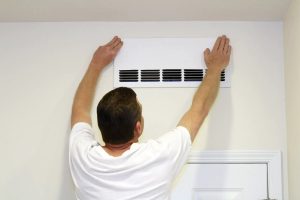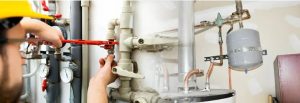Table Of Contents
- Locating And Stopping A Gas Leak
- Importance Of Combustion Gas Leak Detection
- Know The Gas Explosion Hazards
- In Which Places Is Gas Detection Important?
- Factors That Determine How Gas Detectors Are Installed
- Ensuring Safety Is A Continuous Process
- How To Choose The Right Quality Of Sensor
- Primary Tools For Checking Gas Leaks
- Your Responsibility In Making Your Home Safe
Locating And Stopping A Gas Leak
A fully functional gas leak detection system is a must-have in the home especially if you are using gas and are safety-conscious. However, there are some factors you need to put into consideration. For many years, building contractors and other stakeholders in the home building and appliances space have used the soap and water method.
This is highly inadequate and ineffective as it does not pinpoint the exact location where gas is leaking. More recently, the use of gas sniffers and gas leak detectors have become quite popular. This has helped to reduce incidences of gas explosion or poisoning.
People have abandoned the old method of detecting leaks in preference for these modern devices as they have proven more useful and helpful. Although they are somewhat expensive, the benefits far outweigh the cost of purchase and installation.
Importance Of Combustion Gas Leak Detection
Gas leak detection has become quite important due to increasing concerns for safety, health, liability, and performance of gas products and systems. Detection of gas leakage is a non-destructive way of testing for leakage of inflammable gases in sealed systems or components.
Gas leakages can occur because of poor connections, worn out seals or poor welds at joints. Where you have slow gas leaks occurring from small defects or vibrations, these can be dangerous, time-consuming to locate, and highly frustrating to fix. Such leaks can result in explosions, sickness, or even death.
Natural gas or Liquefied Petroleum Gas (LPG gas), are the most commonly used gases. These gases are not visible to the naked eye despite being highly useful. Another one of their characteristics is that given the right circumstances, they are highly explosive. It is therefore important to be observant so that you can tell when your heater is leaking gas and have the problem fixed as soon as possible.
Leak detectors are a safeguard that gas companies often employ in order to have leaks detected. This is often the addition of an odourant to the flammable gas, which is otherwise odourless. This way, the human nose can serve as a gas leak detector when there is a leakage.
However, the human nose is not the best gas detector. Below are some of the reasons you will not want to rely on your nose to get the job done:
- Where there is a properly installed and well-maintained gas leak detection system, leak detection is faster and the system is more reliable than the nose. The sooner action is taken the easier it will be to reduce the amount of gas leaked.
- It is not always possible to be around when a gas leak happens. For example, a gas leak can occur overnight.
- The leaking gas may be lighter or heavier than the prevailing air in the room. As such, it will concentrate close to the floor or the ceiling. When this happens, the gas will be out of reach of the nose.
Know The Gas Explosion Hazards
An explosion hazard is created when a combustible gas has leaked, the ratio between the atmospheric air prevalent in the room and the gas leaked allows it to ignite.
In a case where there is too much air in the room, it will not be possible for an explosion to occur because the gas is not concentrated enough to be a threat. On the other hand, if there is too much gas, there may not be enough oxygen to cause ignition of the gas.
The volume of gas in a room must be within a certain percentage (the Lower Explosion Limit, LEL, and the Upper Explosion Limit, UEL) of prevailing atmospheric air to make an explosion possible if there is a spark or fire.
Do note, however, that while the concentration may not be within explosive limits, it can still pose a threat to human lives possibly because the air becomes toxic when inhaled or breathing becomes impossible as oxygen may have been displaced.
In Which Places Is Gas Detection Important?
Where a slight risk of gas leakage has been detected, it is important to have a fully functional gas detection system installed. The installation of this system should not be limited to places where gas is consumed or handled alone. For example, some schools make use of this gas to fuel burners in laboratories.
The rule of thumb is wherever there is a coupling, a valve, or a gas flange in the room, there is a gas leak risk. It is therefore necessary to fit one or more devices that serve as gas detectors in such a room.
Generally, when two different parts are connected within a gas system, a gap can be present through which a small or large amount of gas can be let out. Rooms, where there are open flames or where there is limited ventilation, need to be given special attention.
Factors That Determine How Gas Detectors Are Installed

It is the type of gas that you use at home that will determine how gas detectors will be placed or installed. When gas leakages occur, some gases will float upwards while the denser kind sinks. Thus, if you do not place your gas detector properly, it will not detect the presence of gas until it fills up the room.
If you use butane, propane, or LPG, for example, note that these gases are heavier than air and what you should do is position a gas detector close to the floor. If, on the other hand, you use gases like hydrogen, methane, or natural gas, place your detector close to the ceiling as these are lighter than air.
Some gases are capable of altering their weights by absorbing moisture. An example of such is ammonia and when this happens, it becomes heavier hence it sinks to the floor. As a result of this, place gas detectors in the ceiling and another on the floor. You need to take note also that ammonia is toxic and explosive.
Ensuring Safety Is A Continuous Process
There is no such thing as a perfect gas detection system. The reason is, some sensors are built-in gas detectors and these have an expected lifespan of about five years. If the system you have installed is older than this, you need to have it tested or replaced immediately. Having a faulty gas sensor would only provide you with a false sense of security at best. This is a very serious safety issue that cannot be ignored.
How To Choose The Right Quality Of Sensor
Finding the right size and type of sensor to use in your gas detector is necessary for it to function optimally. Your choice of sensor must be able to fit into the space and conditions where they will be used.
Domestic Sensors
These come at fairly good prices but are not designed to be used in rough conditions as those used in industrial environments.
Industrial Sensors
Are made for spaces in industrial areas where they provide excellent safety. If you are not sure of what type of sensor to use, you can always go with this type.
Primary Tools For Checking Gas Leaks
Different tools may be used for checking gas leaks. With these tools, you will be able to have confirmation that there are no serious issues to be fixed. If there are issues, the tools will help you to know how serious the problem is and what may be done.
Despite the different tools, it is good you know that gas detectors are quite reliable and useful. Below are some of the other tools you may come across:
Carbon Monoxide Detectors
Carbon monoxide is a dangerous gas partly because it is not easily detected by human senses. The gas has no smell, taste, colour and all these make it difficult to identify.
If malfunctioning occurs in any gas system you make use of or if you make use of any equipment that uses gas, there can be a carbon monoxide leak. Getting exposed to this gas can lead to the inhibition of the much-needed oxygen that the red blood cells need.
You should test for this gas regularly at your facility by investing in carbon monoxide detectors. These devices must be checked and serviced regularly.
Natural Gas Detectors
It is easier to detect natural gas as compared to carbon monoxide and the gas is not even as dangerous because it gives off a sulphurous odour that appears similar to the smell of rotten eggs.
However, in the thick of daily activity, it may not be quite easy to detect this smell especially if other aromas pervade the atmosphere with each competing for attention at the time of the leak.
Portable natural gas detectors may be very useful here because these small devices may be carried around by members in a group as they can give an easy confirmation of the presence of the gas where this gas leaks out.
Radon Gas Detectors
The detection of radon gas can be equally difficult as we found in the case of carbon monoxide because it does not give off any smell nor does it have any colour. However, this gas is quite dense and will sink close to the floor.
Where we have great amounts of radon gas, this can be a sure sign that there is a gas leak somewhere within the facility or building. Where you have radon gas detectors installed in the lowest areas of the building, this issue can be adequately taken care of.
Your Responsibility In Making Your Home Safe
We have seen it happen time and again. A gas explosion is highly catastrophic and so are the aftermath effects of gas poisoning. You do not have to wait till this happens to you or any of your loved ones. Making your home, office, building, or property safe is a task you have to give due consideration. The use of the right leak detection tools as well as the methods needed to ensure full gas heater safety for all those who are around you will go a long way to maintain the safety of lives and properties.
Moreover, if you still feel unsafe even with your gas detectors it may be time to give a professional a call just to ensure that all is safe and working as it should be.










